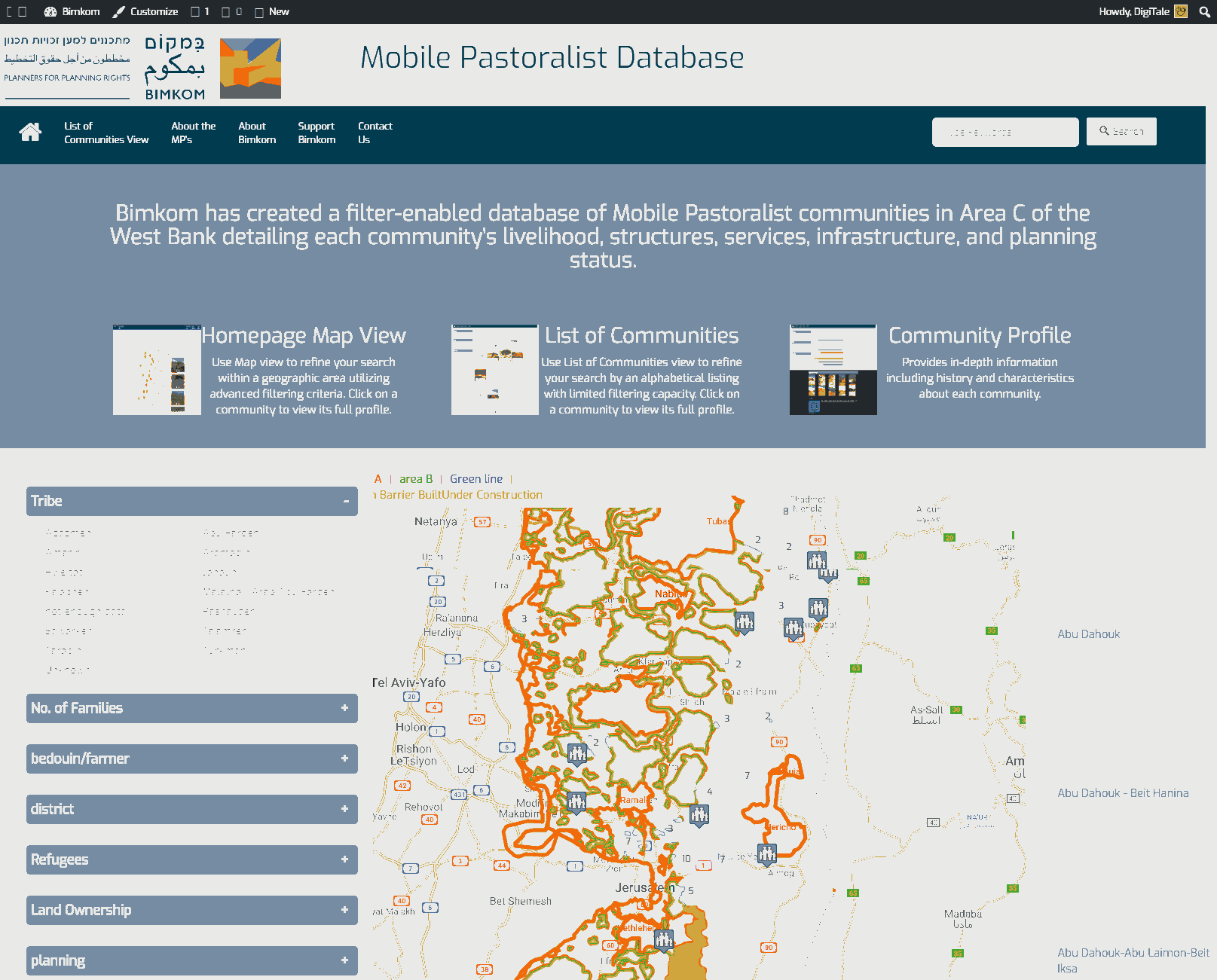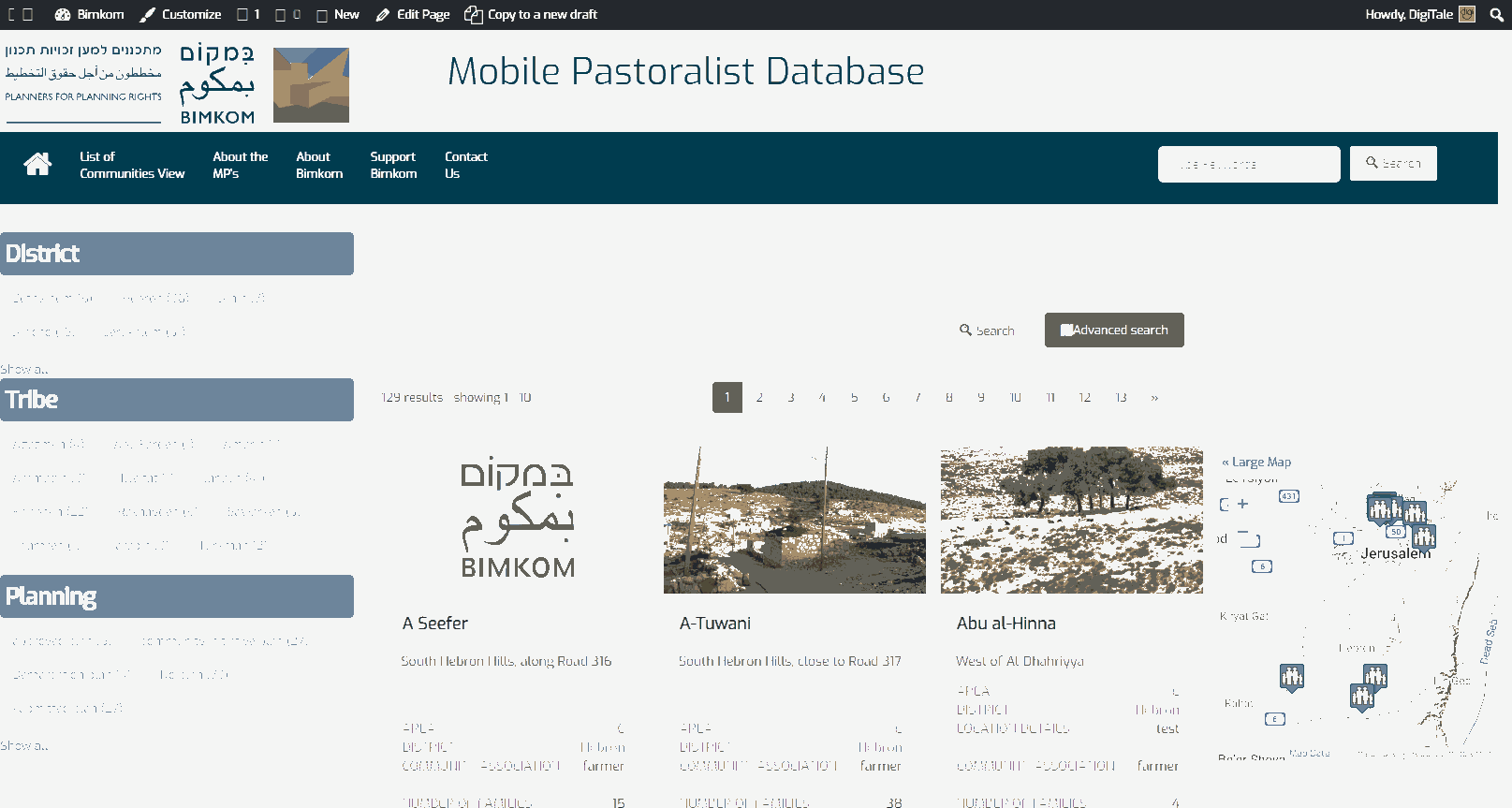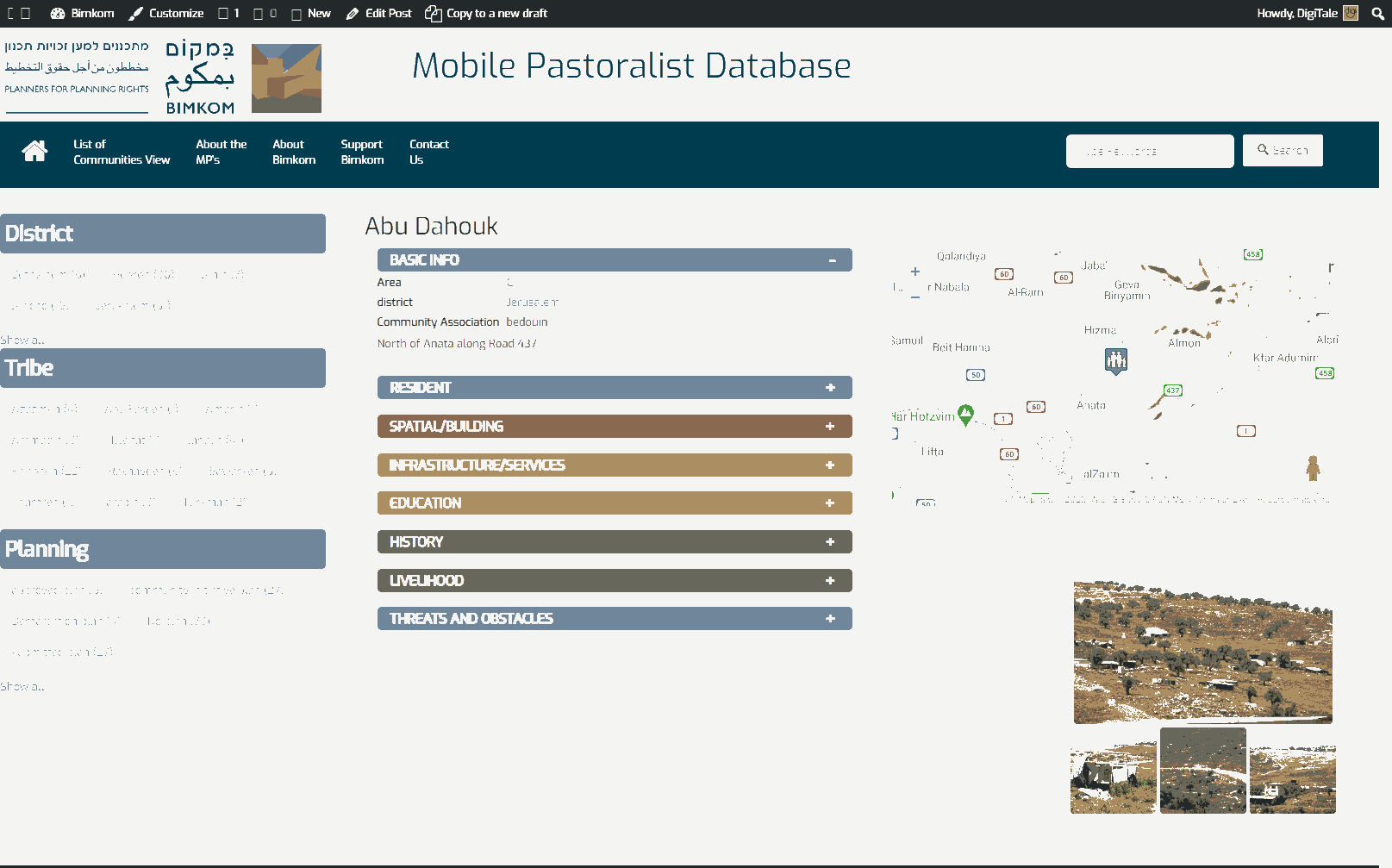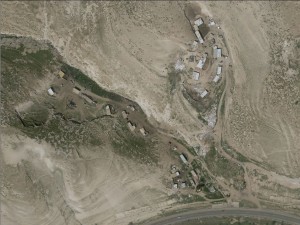Jerusalem periphery, north of Road 1
Wadi Sneysel
Resident
Number of Families
18
Tribe
testing the tooltip
Jahalin
Sub-Tribe
Salamat
Names of Families
Bseisat, O'wedah, Sayayleh
Refugees
- official refugee status
- non-official refugee status
Spatial/Building
Land Ownership
expropriation
Land Ownership - details
The area used to be privately owned by people from Isawiya, but was confiscated in 1975 for the establishment of Ma'ale Adumim settlement.
Planning
community initiative plan
Planning - details
There is an attempt to establish guidelines for planning as part of a regional plan, which has been submitted to court.
Structure Type
- tent
- tin shack
- EU shack
- wood
Infrastructure/Services
Access to Community
private vehicle
Access to Community - details
A difficult dirt road leads to the locality from road no' 1, and although public transportation passes along the nearby main road, drivers are prohibited from stopping along the road. In most cases residents succeed in finding transportation to Al-Eizariya, but the return is harder since in most cases drivers do not stop in Bedouin localities.
Water Access
authorized connection
Water Access - details
The community is connected , with a few other communities from the area, to Ma'ale Adumim's water through Mekorot, and are in high water debts. As a result Mekorot sometimes cuts the water connection. Their debt stood at about 25-30 thousand NIS and in 2016 the PA covered debt for 22 thousand NIS, the communities need to pay the rest.
Electric Connection
Electric Connection - details
Solar panels were provided by Comet-ME in 2017
Health Care
- clinic in neighboring community
- clinic in distant town/village
Health Care - details
The nearest clinic is in Al-Eizariya. The nearest hospital is Al-Makassed hospital in Jerusalem. They have to pay from their own pocket for transportation to the hospital.
They receive health insurance from the PA at least until the summer of 2020.
They receive health insurance from the PA at least until the summer of 2020.
Location of Services
Al-Eizariya
Education
Kindergarten
No
Location of School #1
Al Jabal
general description [school #1]
- Boys
- Girls
- Primary school
- Middle school
Distances to schools [school #1]
more than 5001 meters
Location of School #2
Abu Dis
Time to schools [school #1]
31 minutes - 1 hour
general description [school #2]
- Middle school
- High School
Time to schools [school #2]
31 minutes - 1 hour
Distances to schools [school #2]
more than 5001 meters
Location of School #3
Al Eizariya
general description [school #3]
- Middle school
- High School
Distances to schools [school #3]
more than 5001 meters
Time to schools [school #3]
31 minutes - 1 hour
Travel to school [school #1]
bus
Travel to school [school #2]
bus
Travel to school [school #3]
bus
Accessibility to school [school #1]
3
Accessibility to school [school #2]
3
Accessibility to school [school #3]
3
History
History
Following their expulsion from the Negev in 1948 , the community reached South Hebron Hills and stayed in Masafer Yatta until about 1952 when they moved to the Jerusalem periphery, until they settled in Um Rassas. After 1967 the area was turned into one of the neighborhoods of Ma'ale Adumim and the community was forcibly removed to the village of Al-Jabal which was planned for this purpose. Part of the community stayed in the area in order to maintain their herds, and so they moved to the other side of the road and joined a few families who were already in that area, to create the community known today as Wadi Sneisel.
livelihood
Seasonal Movement
partly
Seasonal Movement - details
Only a few members of some of the families leave during March for a period of two or three months to the areas of al-Jin or Bir Nabala.
Community Initiatives
no Initiatives
Other Occupation
- shepherding
- herd without shepherding
- temporary employment in settlement
- unemployed
Main Occupation
- shepherding
- herd without shepherding
- temporary employment in settlement
Woman's Occupation
- taking care of the herd
- taking care of the kids
- housekeeping
General Livelihood - details
Grazing areas have been severely restricted by settlements and the road, and they mostly feed the herds without grazing. They own about 1500 sheep and 3 Camels. The dairy products are mainly used by the community itself as the competition in the area makes it difficult to market them. When possible they sell in Al-Eizariya.
They herd in a small area on the other side of the road, which they reach by crossing the drainage tunnel below the main road, no'1.
Until 2006, many from the community worked in nearby settlements, but in recent years permits are very hard to get. Today only very few of them work in settlements.
They herd in a small area on the other side of the road, which they reach by crossing the drainage tunnel below the main road, no'1.
Until 2006, many from the community worked in nearby settlements, but in recent years permits are very hard to get. Today only very few of them work in settlements.
Threats and obstacles
Threats and Obstacles
fjfxjsfjsyjsyj
- close to settlement
- within settlement municipal boundary
- road
Threats and Obstacles - details
The proximity to the settlements and the road that cuts through the land makes it almost impossible to graze the herds.
Tractors are not allowed to drive in the road leading to the community, making it very difficult to bring food for the herds. Cars are also not allowed to stop in the road, making it impossible of public transport to reach the area. High fines are distributed daily to drivers and pedestrians.
Tractors are not allowed to drive in the road leading to the community, making it very difficult to bring food for the herds. Cars are also not allowed to stop in the road, making it impossible of public transport to reach the area. High fines are distributed daily to drivers and pedestrians.
Number of Demolition Orders
26
Number of Demolitions
4
Demolitions - date of update
September 17, 2010




